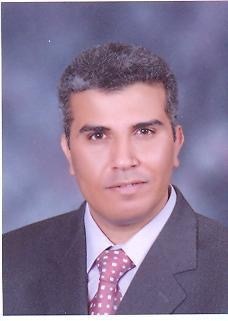The ability of thermoelectric materials to convert heat directly into electricity, and conversely electrical power into heat or cold, makes them attractive for scientists. They also have other useful features, such as reliability, environmental protection and a long working life, and they do not produce vibrations or noise or have moving parts; consequently, they have a wide range of applications, e.g. as power generators, refrigerators, energy converters and sensors [Shokr E. K.2013, Disalvo F. J. 1999, Sales B. C. 2002, Akimov B. A. 1993, and Kaoedanov V. I. 2010].
In this work, polycrystalline (Bi1-xSbx)2Se3 (x=0.0, 0.025, 0.05, 0.075, and 0.10) were prepared using a facile method based on the conventional melting technique followed by annealing process. The process of annealing was performed at 423, 473, 523 and 573 K for various annealing time periods (4, 8, 12 and 16 h). X-ray analysis confirms that the samples consist of pure hexagonal phase of Bi2Se3 and no indications to peaks corresponding to impurities or other Bi-Se compounds were detected.
The effect of annealing treatment on the structure morphology were investigated by means of SEM. SEM images of the samples annealed at 16 h were studied as examples. it was found that the grain size is variable, and clearly increases with increasing annealing temperature.
The electrical conductivity (s) and Seebeck coefficient (S) have been measured for the bulk samples within the temperature range 100-400 K. In general, the overall behavior of the samples does not vary with variation of the annealing temperature or time and the σ–T plots exhibit a conduction transition at a certain temperature Tσ. The s (T) plots in the intrinsic region are well described by the well-known Arrhenius's formula. The energy gap ΔE increased as the annealing temperature increased, showing a maximum at 473 K. With further elevation of the annealing temperature, ΔE decreases. A similar trend was observed for the Seebeck coefficient. By contrast, the electrical conductivity σ300 behaved oppositely and showed a minimum value at 473 K, followed by sharp increase with annealing at higher temperatures. The variations of these electrical and thermoelectric parameters with annealing conditions can be explained in the framework of Bi super-stoichiometery.
A room temperature Pf (Pf300) value of 6.9 μWK−2cm−1 was recorded for the sample annealed at 573 K for 16 h. This value is much higher than those reported in other works for the same composition. This work presents heat treatment as a very effective process for improving the thermoelectric properties of Sb doped Bi2Se3 alloy. This provides an evidence that this composition is a promising candidate as a thermoelectric power generator.

